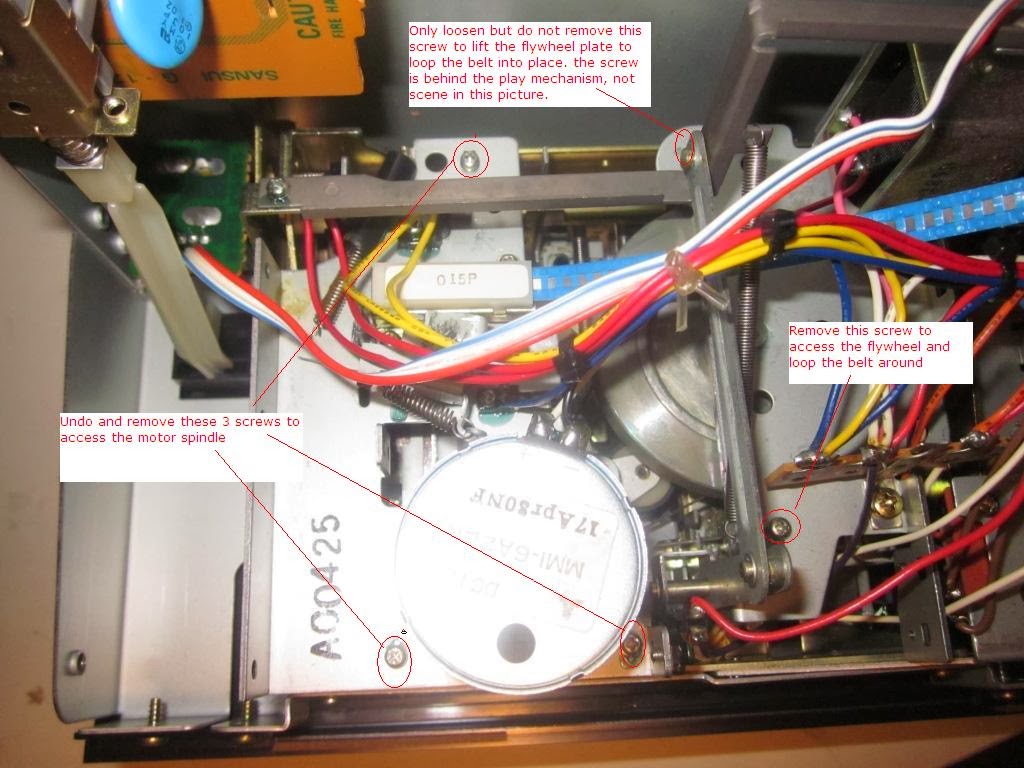I picked up this beautiful Sansui SC-1330 cassette deck for $10.00 that needed the main flat belt repaired. These decks are circa 1979-1980, retailed for around $350.00 and by now the original belt had turned to goo.
The deck looks like it was made to complement the Sansui AU-517, AU-717 or the AU-917 line of amps.
First off the main flat belt has an 8" inner circumference and these are hard to track down locally, one must search EBay or other online parts retailers. I opted to take the belt out of a dead Harmon/Kardon CD-91 cassette deck. After mush research I realized that these two decks share the same belt.
The walk through is pretty straight forward with no special tools needed.
Unplug and unscrew the 6 screws holding the black case of the deck.
Once opened you will see the motor assembly and all the working parts surrounding it.
Best to get a bunch of Q-Tips and I found Acetone worked faster than rubbing alcohol, clean all the gooey belt residue off the motor spindle and the main flywheel.
Next is to unscrew the 3 screws on the main motor plate and gently pull back the motor. Carefull doing this ans there are fragile contact plates attached.
Next is to undo the top flywheel screw as shown in the picture and loosen the bottom flywheel plate screw on the bottom.
( Loosen but do not remove the bottom screw!)
Now you should be able to lift the flywheel plate and the flywheel high enough to loop the new belt in place. Once the belt is looped in place put the screws back in and tighten the flywheel plate.
With the motor still loose attach the belt around the motor spindle and re-assemble the motor plate into the original position...Note that there is a delicate contact point that needs to rest on the play mechanism and it is crucial that you do not bend the copper film upon re install. The black plastic piece needs to rest on the play mechanism. I found out the hard way. See picture below.
Now tighten the original 3 screws and check to see if the deck functions properly, if it does not work at all re check the contact points. You may have to loosen the 3 motor plate screws to make sure the contact point connect.
If you cassette deck works then replace the cover and enjoy.
It is a pretty easy fix for a nice cassette deck.
Below is a picture of the Harmon/Kardon CD-91 donor deck in which the electronic solenoids stopped working.
















